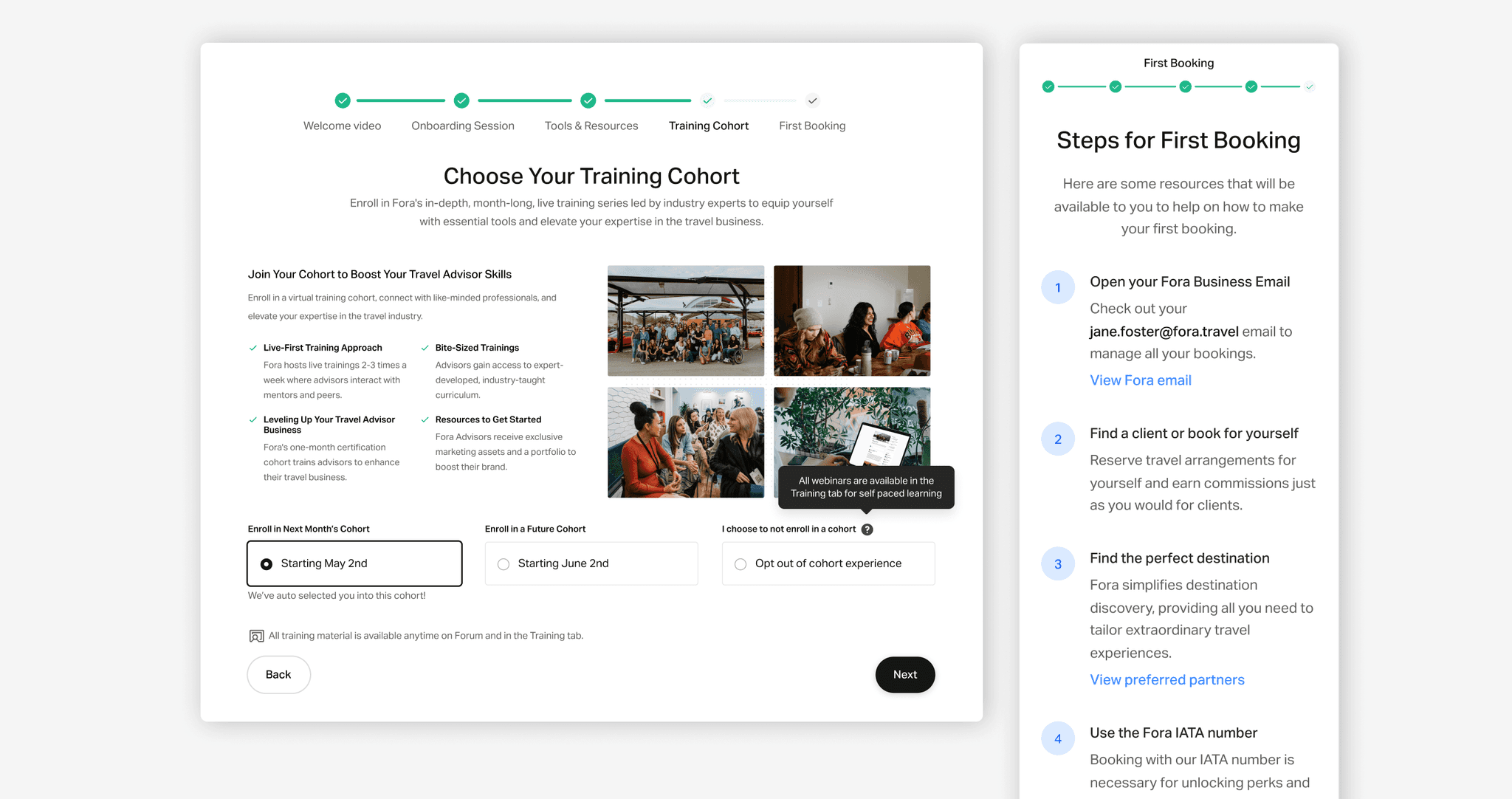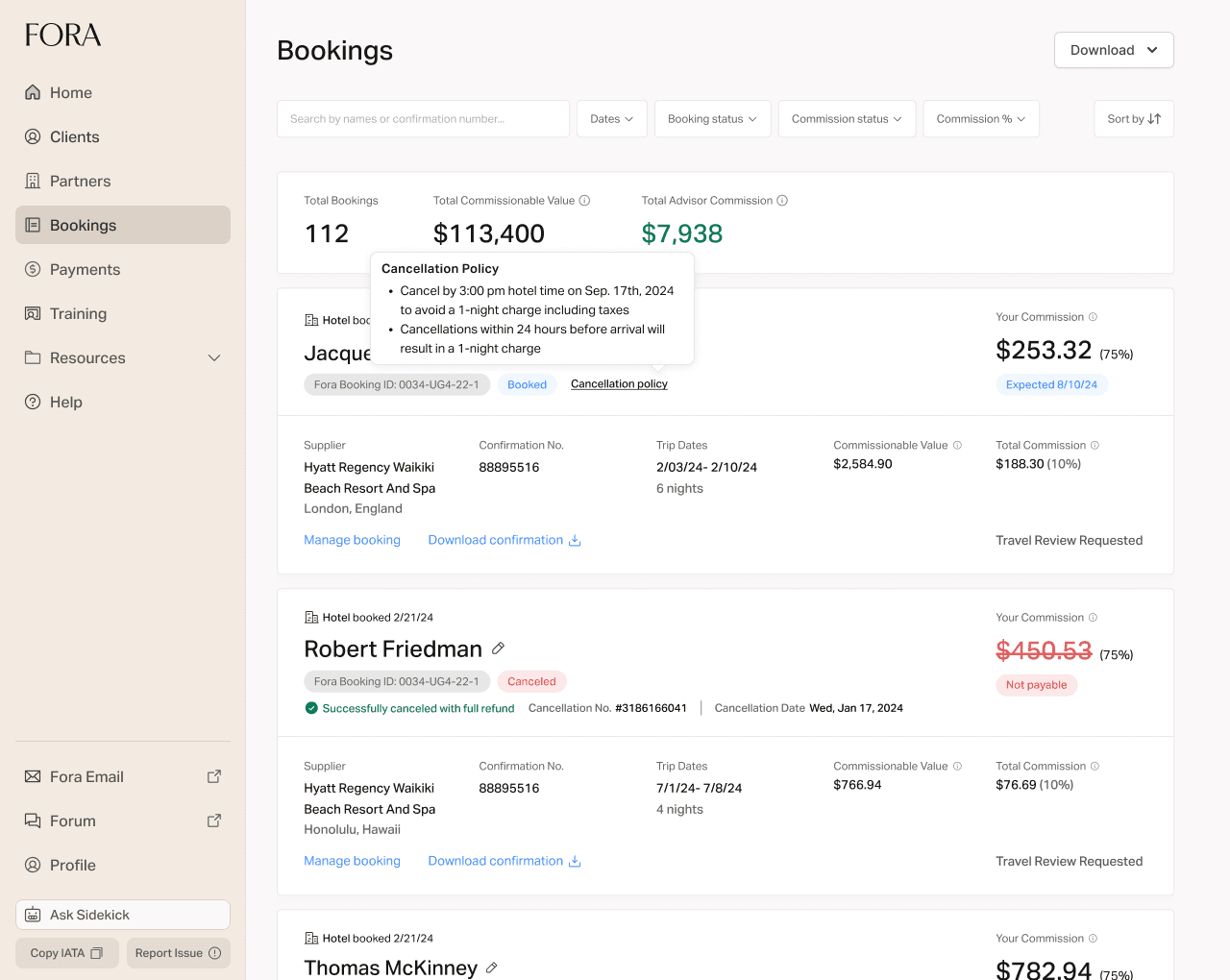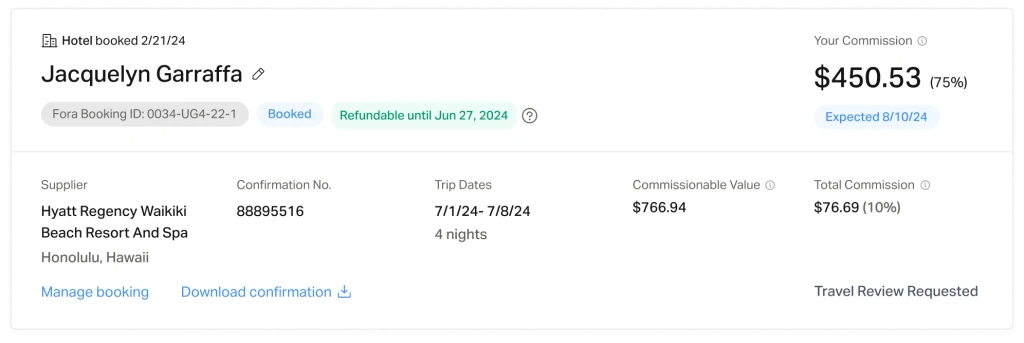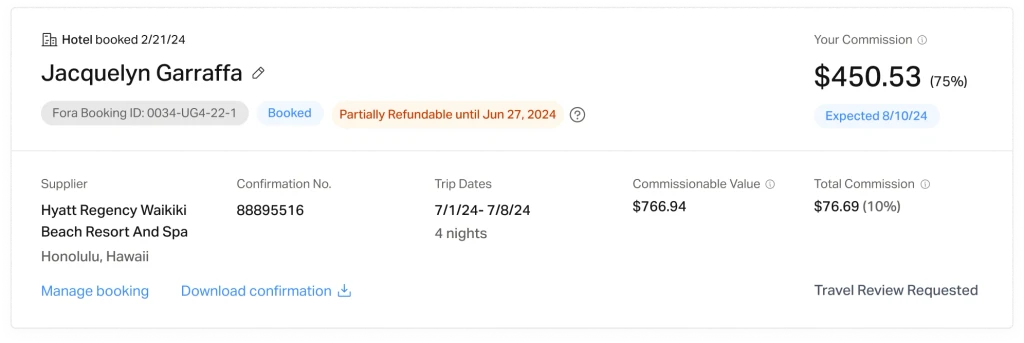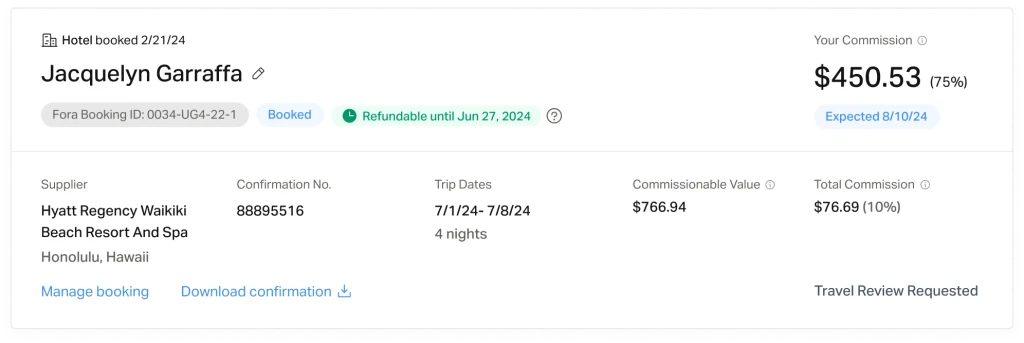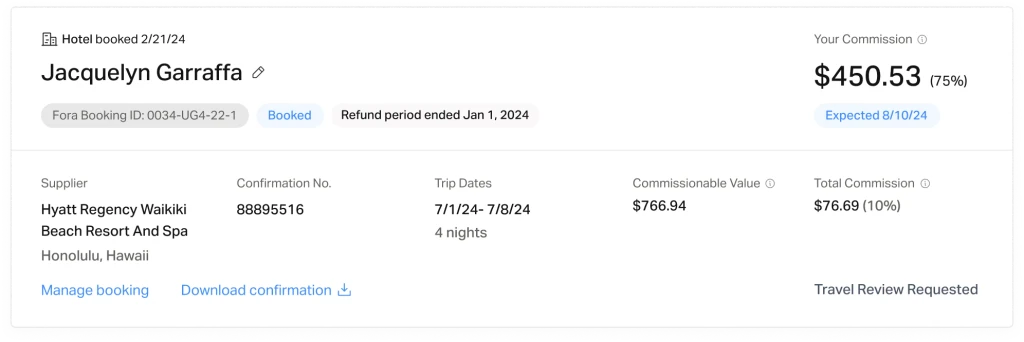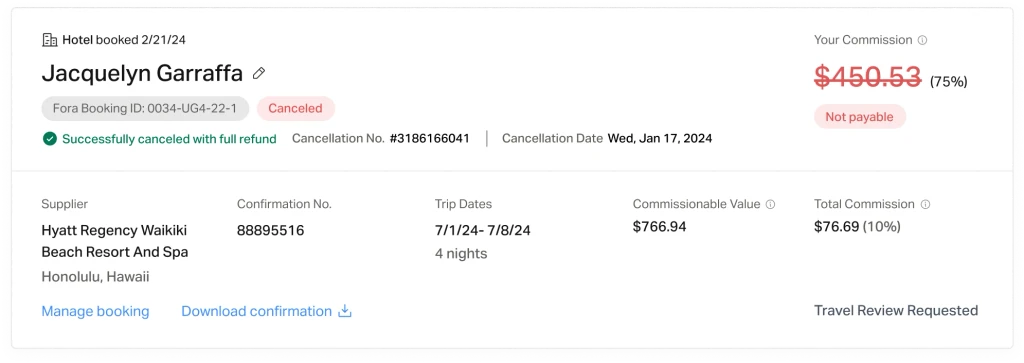Improving communication on booking refundability to maintain trust and increase platform adoption
This project aimed to improve the accuracy and clarity of refundability information displayed to travel advisors on our booking platform. The goal was to increase advisor confidence, reduce booking errors, and ultimately boost platform adoption.
Consults
Alex C, Vadim P
Problem
Travel advisors were confused about refundability information, leading to booking errors, advisor frustration, and a decline in booking platform adoption.
User Research & Insights
The Power of Context
Diving deep into our rate data I discovered rates can have different refundability implications depending on the booking stage, booking status, and current date. For example, a rate might be fully refundable when booked but become partially refundable as the travel date approaches.
The Advisor's Frustration
Imagine Sarah, a seasoned travel advisor, searching for the perfect hotel for a client's upcoming vacation. She finds a fantastic deal, but its labeled as "Non-refundable". She carefully reviews the cancellation policy and realizes the rate is actually refundable, but only within the next two days. Sarah is frustrated that she was presented with false information and only because she reviewed the fine print, discovered that this rate is still refundable. This confusion makes her question the reliability of the platform and makes her hesitant to use it for future bookings.
The Impact: Sarah's experience highlights the damaging impact of mislabeled refundability information. Admittedly the initial decision was to simplify the advisor experience by marking rates ending in less than 3 days as non-refundable, the outcome was actually more confusion and created distrust. My team realized we were creating a false sense of urgency and that advisors needed clear, accurate information, regardless of the timeline.
Conflicting Refundability states due to bad data
Imagine John, a travel advisor, browsing hotel rates for a client's trip to Paris. He sees a rate that looks great, and a clear "Refundable" tag gives him confidence. He clicks on the rate details page to see more information, but what he finds is shocking: the rate is now marked as "Non-refundable." John is confused. He remembers clearly seeing a "Refundable" tag, and he's unsure what to trust. This inconsistency between the rates page and the rate details page creates unnecessary doubt and frustration. It undermines John's confidence in the platform and makes him hesitant to move forward with the booking.
The Impact: This experience, unfortunately, isn't unique. The discrepancy between the refundability information on the rates page and the rate details page is caused by an API data issue. The two pages rely on different APIs, and the refundability status provided by the rate details API, which is the most accurate, is unpredictable until the page is opened. This creates a potential for conflicting information and leaves advisors uncertain. This lack of consistency erodes trust, wastes advisor time, and risks losing potential bookings.
Rate Preview
Cancellation Policy
Non-refundable
Additional details
Format with AI
cancel 0000 htl time on 06feb24 - fee 2 nights - include tax - fees two nights fee within 21 days cancel for guest rooms.
Rate Details
Design Goals
Improve Accuracy: Ensure refundability pills aligns with the hotel's cancellation policy.
Increase Clarity: Provide a user-friendly and unambiguous display of refundability.
Boost Platform Adoption: Increase advisor confidence and encourage more bookings.
Design Solutions
Refundability period ending in 3 days or less
To boost trust in the platform I changed the logic of displaying non-refundable for when a rate refundable period is ending in less than 3 days to refundable to accurately display the correct information. In addition, on the rates detail page instead of a simple "Refundable" label, I introduced a clock icon to indicate when a refund period was ending soon as well as the date. This visual cue would immediately signal to advisors that the rate was still refundable but that they needed to be aware that a deadline is approaching soon.
This visual differentiator would help advisors make informed booking decisions, knowing they have a limited window to cancel if necessary. The new pill ensured accurate information was conveyed without creating unnecessary confusion or anxiety.
Cancellation Policy
Refundable until Mar 13, 2024
Additional details
Format with AI
cancel fee equals room and tax for entire stay cancellation permitted up to 3 days before arrival.
Rate Details
Solving for bad data
To address the data inconsistency case, I implemented a solution to flag discrepancies to advisors. The engineering team developed a mechanism to compare the refundability information from both APIs in real-time. When a discrepancy was detected (for example, a "Refundable" tag on the rates page and a "Non-refundable" status on the rate details page), the system would display a warning message to the advisor.
This solution served several key purposes:
Increased Transparency: The warning message ensured that advisors were aware of the potential data inconsistency, empowering them to make informed decisions.
Improved Trust: By acknowledging the issue and providing guidance, the platform demonstrated transparency and a commitment to delivering accurate information.
Minimized Confusion: The warning message helped advisors avoid confusion and frustration by proactively alerting them to potential discrepancies.
This data-driven solution, while not eliminating the underlying data issue, but it provided a temporary fix to address the immediate problem. The team then proceeded to work with API developers to ensure data consistency between the two APIs, addressing the root cause of the problem. By implementing a warning system and working to improve data quality, the platform could deliver a more reliable and trustworthy experience for travel advisors.
Cancellation policy
Cancellation Policy Issue
Please refer to the additional details for the most accurate information.
Additional details
Format with AI
cancel 1200 htl time on 31jan24 - fee 3 nights - include tax - fees 3 % mandatory fee on refunds - 30 day cancel penalty.
Rate Details
Contextual Refundability Tags
I introduced dynamic pills on the bookings page to address the challenge of constantly changing refundability based on the current date. These pills dynamically displayed text like "Refundable until [date]" or "Refund period ended [date]," providing up-to-date information. These dynamic updates ensured advisors could quickly grasp the refundability status for each booking, improving their understanding and enabling better communication with clients. The result was a more user-friendly and efficient experience for managing bookings.
Fully Refundable
Partially Refundable
Refundable period ending soon
Refund period ended
Canceled with a full refund
Challenges & Lessons
Data Quality
I learned that data quality and consistency are critical for successful design implementation. As a team we needed to establish stricter data quality standards and implement data validation processes.
Key Takeaways
Empathy for our users
By addressing the challenges of inaccurate and confusing refundability information, we empowered travel advisors with the information they need to make informed booking decisions, ultimately contributing to increased user satisfaction, platform adoption, and business success.

